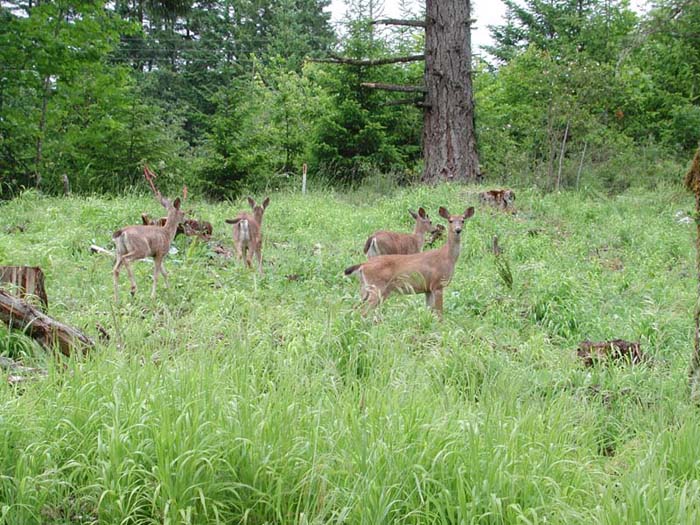Animals of the Brandis Oaks Savannah
Restoration Project
These are the main animals that the study will look at:
Western
bluebirds -
Bluebirds
began to visit the site before the logging had been completed. Schreiber
and Eltzroth agree that the changed
habitat should benefit local bluebird populations.
Birdhouses
are currently being set up to
augment and better manage bluebird nesting habitat, but long-term plans
are to
provide nesting habitat through the gradual and episodic dying of
limbs, tops,
and trees in the oak savannah area. Birdhouses
may continue
to be used in the residential and staging
(rocked) areas indefinitely.
Western
gray
squirrels
- Schreiber, Hoyer, and Eltzroth all agree that western gray
squirrels will likely begin to occupy the new habitat almost
immediately, if
they aren't there already. Apparently,
most of the gray squirrels in Corvallis
are
natives (as opposed to Salem,
where most of the gray squirrels are exotics), and the wildlife experts
seem to
agree the opening of this canopy should result in increased local
populations
of the animal.
Sharp-tailed
snakes
- Both Schreiber and Hoyer believe these animals may already
exist on the site. I am preparing to go
out with Hoyer in the next few weeks to try and verify their existence. Snakes
live principally on slugs and,
according to Hoyer, may actually develop greater population
densities in the residential development than in the oak savannah.
Fender's
blue
butterfly - These
animals haven't been sighted on the project site yet, but the Kaye
report
indicates they may well migrate to the area
Other Animals the Brandis Oaks Savannah Restoration
Project Will Look at:
Mammals
Invertabrates
Feral pets

©
2005 by Oregon Websites and Watersheds Project, Inc.


![]()